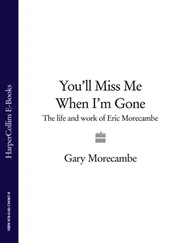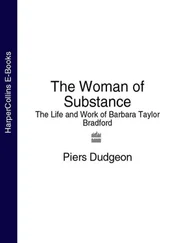Such correspondences strike the modern mind as meaningless. Meric Casaubon, who published Dee’s spiritual diaries a century later, warned that ‘some men come into the world with Cabalistical Brains, their heads are full of mysteries… Out of the very ABC that children are taught…they will fetch all the Secrets of God’s Wisdom’. 4 But to Dee, it provided a crucial link between language and the mathematical basis of nature.
The Cabala also had a practical, magical side. Since language was tied into the formation of the universe, words had the potential to change it. Cabalism provided a technology for engineering incantations that could summon spirits and influence events, as prayers are supposed to do, but formulated according to systematic, almost scientific principles. And, unlike prayers, such incantations would work whether you were Catholic or Protestant. 5
There is no evidence that Dee tried to use the Cabala in this way at this stage in his career. He was, however, fascinated by another practical use, an application of particular interest in the tense atmosphere of Reformation Europe, where governments were eager to find ways of preserving their own secrets and discovering those of their rivals – the creation of secret codes and ciphers.
In February 1563, Dee reappears in the busy merchant town of Antwerp, staying at the sign of the Golden Angel. Still engaged in his endless, expensive search for works to add to his library, he was about to make what he considered to be the find of his life.
Antwerp was filled with the clatter of printing presses. It boasted one of the world’s most important publishing firms, founded by Christopher Plantin, whose ‘Officina Plantiniana’ workshop turned out thousands of Christian and humanist works distributed across Europe and as far afield as the Spanish colonies in Mexico and South America. But Plantin also produced several heretical works, notably those of Hendrick Niclaes, founder of the ‘family of love’. This secretive sect, whose members came to be called ‘Familists’, included Dee’s friend the mapmaker Abraham Ortelius, and the Birkmanns, a powerful bookselling family based in Cologne. Dee patronised their London shop continuously over forty years, falling into conversation with anyone who happened to be there. 6 The familists invited all ‘lovers of truth…of what nation and religion soever they be, Christian, Jews, Mahomites, or Turks, and heathen,’ to become part of a learned brotherhood. 7 They believed that members could show allegiance to any prevailing religious doctrine in order to promote the movement’s aims of developing an all-embracing theology. This reflected Dee’s own view, and it is likely he knew of and was sympathetic to the sect. 8
During the winter of 1563, Dee heard rumours that a copy of one of the most precious manuscripts in circulation, for which scholars from all over Europe had been searching for over sixty years, had turned up in Antwerp. It was called Steganographia, and had been written by Johannes Trithemius.
Trithemius was one of the founders of modern cryptography. He wrote the first published work on the subject, Polygraphia, which appeared in 1518. Born in 1462, he took his name from Trittenheim, a town on the left bank of the Moselle in Germany. He claimed to be unable to read until he was fifteen. At that age he had a dream in which he was presented with two tablets, one inscribed with writing, the other with pictures. Told to choose between them, he picked the tablet with writing because of his ‘longing for knowledge of Scripture’. 9
He later joined the Benedictine abbey of Sponheim, which was then ‘poor, undisciplined, ruinous, and virtually without furniture’. In July 1483, he was appointed abbot, and embarked on a complete renovation of the place, transforming it into a centre of learning. He built a lodge for visiting scholars, decorating the walls with classical and contemporary prose and poetry. He also rebuilt the library, increasing it from just forty-eight books to two thousand.
Trithemius’s book-collecting drew him towards the study of the Cabala, and his work became a strong influence for many of the great mystic scholars of the early sixteenth century, notably Henry Cornelius Agrippa of Nettesheim, who was his pupil. Agrippa was the leading writer on mysticism and magic of the Renaissance. His shadow ‘made all Europe honour him’, Marlowe wrote in Dr Faustus.
As with Dee, Trithemius’s interest in such subjects led to his being accused of ‘trafficking’ with demons. It was even said he conjured up the bride of Maximilian I soon after her death so the Emperor could see her once more. As Trithemius kept his work increasingly secret, so these accusations became ever more insistent and threatening.
Dee knew of the accusations against Trithemius, placing him alongside Socrates and Pico della Mirandola (pioneer of a Christian form of the Cabala) as a victim of intolerance. Like Dee, Trithemius drew a sharp division between magic and superstition. Magic was about knowledge, the study of the hidden forces – spiritual as well as physical – that rule nature. Superstition exploited ignorance. Thus Trithemius called for witches and wizards to be rooted out, and attacked the sort of fortune-telling which was practised by Dee’s contemporaries like Nostradamus as ‘empty and foolish’.
Trithemius summed up his career: ‘I always wanted to know what was knowable in the world…But it was not within my power to satisfy the desire as I wished.’ This was a sentiment Dee would one day echo. But for the moment, with his growing library, knowledge of languages and science, his influence at court and friendships with Europe’s leading intellectuals, Dee seemed at the threshold of complete success. And now he had a copy of Steganographia within his grasp.
Trithemius had started work on the book between 1499 and 1500. He sent a letter to his friend Arnold Bostius, a Carmelite monk in Ghent, in which he boasted that once finished it would be a ‘great work… that, if it should ever be published (which God forbid), the whole world will wonder at’. He promised that it would contain a host of hidden writing systems, a way of transmitting messages over great distances using fire, a method of teaching Latin in two hours and a form of communication that can be achieved while eating, sitting or walking without speech, facial expressions or signs. Unfortunately Bostius died before the letter arrived and it was read with horror by his brother Carmelites, who circulated it in an attempt to discredit Trithemius.
A further setback came when Trithemius was visited by an officious dignitary called Carolus Bovillus in 1500. Bovillus later reported that ‘I hoped that I would enjoy a pleasing visit with a philosopher; but I discovered him to be a magician.’ It was his perusal of the Steganographia, in particular its lists of the ‘barbarous and strange names of spirits’ in languages he did not recognise, that convinced him of this. 10
Trithemius then abandoned the work, dying in 1516. But the Steganographia lived on, thanks to its advance publicity: manuscript copies of three of the four books mentioned by Bovillus were thought to have survived. They soon acquired mythical status and became as sought after as Aristotle’s lost dialogues.
Dee was intensely excited when he heard of the existence of a copy of the manuscript in Antwerp. Getting his hands on it proved difficult. It involved spending all his travelling money, some twenty pounds, and working through an intermediary, a mysterious ‘nobleman of Hungary’, who in return demanded that Dee ‘pleasure him…with such points of science as… he requireth’. 11 Even then, he was only allowed to keep the manuscript for ten days.
Читать дальше












